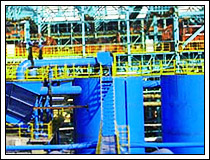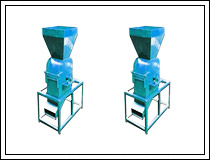Coarse Granule Separators
Granule separators are simple machines that help to remove/separate granular particles by specified size. These machines generally work on the principle of vibro-shieving to separate coarse granules as desired by the user.

Wastewater contains a wide variety of contaminants of varying size, shape and state, including oils, heavy metals, solid particles, chemicals, organic compounds, etc. The solid particles must be separated as they tend to increase the BOD when discharged to receiving waters providing places for microorganisms to escape disinfection or even clog soil absorption fields in onsite systems. Wastewater treatment plants around the world use granule separators to eliminate the solid contaminants and thereby the threats posed by them.
Coarse granule separators can effectively separate:
- Sediments
- Floating substances
- Suspended substances.
Working Principle of Coarse Granule Separators
A typical granule separator consists of:
- A top tank
- Sinker
- Screw conveyor box
- Ribbon spiral
- Drive mechanism
- Rain spout.
 At first, the wastewater is made to enter the separated water tank to facilitate speed-down settlement and dissipation of energy, which heightens the water staying time. To lessen the settlement time and improve treatment capacity, the water is made to get into the effluent-water area by the bottom of rubber shade. The water then enters the rain spout along the wedge plate and gets discharged from the outlet vent. The larger suspended particles are deposited into the sludge tank. This drives the ribbon spiral forces the residue through the feeding pipe under the promotion of the screw. As a result the residue and the water gets separated, corresponding to the size of the feeding pipe. At first, the wastewater is made to enter the separated water tank to facilitate speed-down settlement and dissipation of energy, which heightens the water staying time. To lessen the settlement time and improve treatment capacity, the water is made to get into the effluent-water area by the bottom of rubber shade. The water then enters the rain spout along the wedge plate and gets discharged from the outlet vent. The larger suspended particles are deposited into the sludge tank. This drives the ribbon spiral forces the residue through the feeding pipe under the promotion of the screw. As a result the residue and the water gets separated, corresponding to the size of the feeding pipe.
The rotatory speed of the ribbon spiral can very well be adjusted as per the local water volume and suspended substance content to assure spiral slagging capability and treatment effect of the machine.
|